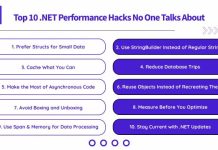
Margins at small, owner-run hotels live and die by minutes, not grand strategies. Five extra minutes at check-in, a room cleaned out of sequence, a missed rate change during a sell-out, each one is a quiet leak. The fastest way to plug those leaks is to automate repeatable work inside the guest journey on independent hotel PMS, so your team spends energy on what guests actually remember. In this business-finance view, I’ll show how modern small hotel property management systems turn routine chaos into measurable savings and incremental revenue, and why those gains stack into a durable ROI for independents.
Automation isn’t about replacing hospitality; it’s about removing friction between demand and delivery. The most effective independent hotel property management systems do four things at once: keep rates and availability accurate everywhere, sequence operations in real time, answer common questions instantly in your brand voice, and handle payments without drama. When those pieces live in one system, labor hours shrink, errors vanish, conversion improves, and RevPAR nudges up because you price with confidence and sell the room that’s actually ready.
Where automation pays, line by line
1) Labor: fewer minutes, same standards.
Mobile housekeeping tied to live arrivals prioritizes due-in rooms automatically, groups tasks by corridor, and logs quick maintenance notes with photos. Saving just five minutes per departure clean adds up fast. For a 30-room hotel running 70% occupancy with an average two-night stay (about 315 departures in a 30-day month), five minutes saved is equivalent to 1,575 minutes, or 26.25 hours. At $18/hour, that’s $472.50 in monthly labor costs, without touching quality.
2) Front desk time: fewer calls, faster replies.
Template-driven email/SMS for parking, late arrivals, breakfast hours, and door codes deflects repeat calls and shortens the rest. Many independents see 20-40% fewer phone minutes within weeks. If your desk saves a conservative 45 hours/month at $20/hour, that’s another $900 you can redeploy to coverage where it matters.
3) Commissions: control the mix, keep the margin.
An integrated booking engine plus parity alerts helps you claw back direct share without fighting OTAs. If your monthly room revenue is $81,900 (ADR $130, 70% occupancy, 30 rooms) and you shift just 5 percentage points from OTAs (15% commission) to direct, commission drops by roughly $614/month. You didn’t buy more ads; you simply made “book direct” smoother and quickly closed parity gaps.
4) Upsells: small prompts, steady ADR lift.
Automation offers tasteful add-ons at the right moment, such as late checkout on soft departure days, a view upgrade at confirmation, and a simple welcome basket. With a 10% attach rate on 315 monthly departures at $15 each, that’s $480 in top-line. Subtract a $3 unit cost, and you still bank $384 in high-margin revenue.
5) Pricing and restrictions: faster to the correct rate.
Rule-based triggers raise BAR and enforce minimum stays as pickup crosses thresholds, instead of relying on 4 p.m. guesswork. A modest 3% RevPAR uplift on our $81,900 example is $2,457 in monthly revenue. If your variable cost load is around 40%, that’s ~$1,474 in contribution earned by timing, not pressure.
6) Payments and disputes: fewer fires to fight.
Clean pre-auths, automatic reversals, and dispute packets compiled from the stay timeline (messages, key issuance, ID capture) save write-offs and staff hours. Even a $300/month improvement changes the P&L mood.
Add those conservative gains: $472.50 (labor) + $900 (desk) + $614 (commission) + $384 (upsell profit) + $1,474 (pricing) + $300 (payments) ≈ $4,145/month. Annualized, you’re looking at ~$50k in incremental contribution from workflow changes; most guests never see ample cover for software fees and then some.
Turning automation into “five-minute workflows”
Financial success materializes when routines become shorter and more consistent. Aim to compress these four:
Pre-arrival to key-in.
From the reservation, send one friendly message with directions, parking, late-arrival steps, and a light upsell. On arrival, issue keys, confirm or place the hold, and auto-email the folio. Target: under five minutes per check-in.
Rates and restrictions.
Read a simple pace/occupancy grid, click one rule set: bump price at 70% on-the-books, enforce two-night minimum at 85%, close cheap channels within three days of arrival, target: five minutes for the weekend.
Housekeeping sequencing.
Push due-ins to the top, group by corridor, drag-drop rush cleans, and capture photo notes for maintenance. Target: shave five minutes off departure cleans while raising on-time readiness at 3 p.m. to 90%+.
Guest messaging.
Template answers in your tone for the top ten FAQs, auto-filed on the reservation. Escalate edge cases to humans. Target: sub-15-minute daytime response times without adding headcount.
A 30-day rollout that won’t break the desk
Week 1 – Map your truths.
Confirm room types, rates, taxes, cancellation policy, and the ten most-asked questions guests ask. Capture average housekeeping minutes per clean and note bottlenecks.
Week 2 – Set guardrails.
Calculate your floor rate (CPOR + target profit per room), codify two pricing triggers, and enable two upsells guests actually want. Write them on a one-pager that any staffer can follow.
Week 3 – Turn on automations.
Activate pre-arrival and late-arrival flows, sequencing for housekeeping, and rate rules in your PMS. Connect the website engine and core channels; test three bookings end-to-end on a phone.
Week 4 – Measure and tune.
Watch five KPIs: direct share, housekeeping minutes per departure, 3 p.m. room readiness, average response time, and net ADR by channel. Adjust templates, thresholds, or sequencing until they meet your standards, but do not change them until the needles move.
Risk, compliance, and the brand voice
Automation must protect trust. Keep deposit and hold language clear in confirmations, show total price early, and give guests an easy opt-out for marketing while retaining operational messaging. Train staff to review AI-drafted answers weekly so tone stays human and on-brand. In payments, standardize ID or card-present checks for short lead-time bookings; you’ll reduce disputes without adding friction to the majority.
Why independents feel the ROI fastest
Large brands can hide inefficiency with scale; small properties cannot. That’s precisely why small hotel property management systems with native automation punch above their weight. You don’t need a revenue team, just rules that fire on time. You don’t need a call center, just consistent, saved replies. You don’t need a bigger housekeeping roster, just a smarter order of operations. The financial edge isn’t a one-time spike; it’s a compounding effect as fewer tasks slip, fewer errors snowball, and guests see you as organized and fair, with conditions that support stronger pricing in every season.
The finance story you can tell your future self
In twelve weeks, the story you tell at month-end should change from “we were busy” to “we were profitable, and here’s why.” You’ll know your direct share ticked up, your housekeeping minutes ticked down, your RevPAR spread over CPOR widened, and your team handled more with less stress. That is the ROI of automation within independent hotel property management systems: dozens of minor, reliable improvements that protect margins without diminishing the human touch that makes your place memorable.
Start with the five-minute workflows. Let the software take the strain. Then reinvest the time and cash you free into what guests actually buy: clean, ready rooms and gracious, unhurried service. That’s how automation becomes not just a tech win, but a durable financial moat for small, independent hotels.










